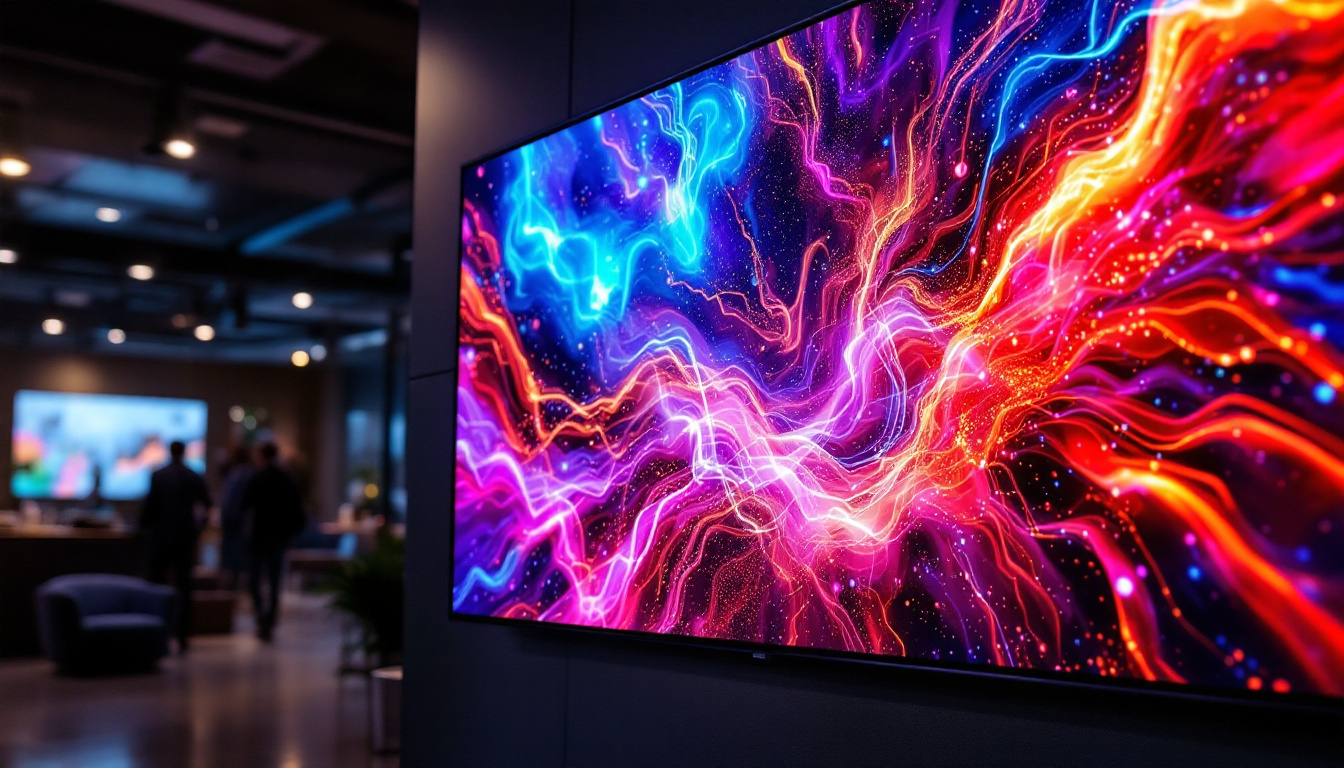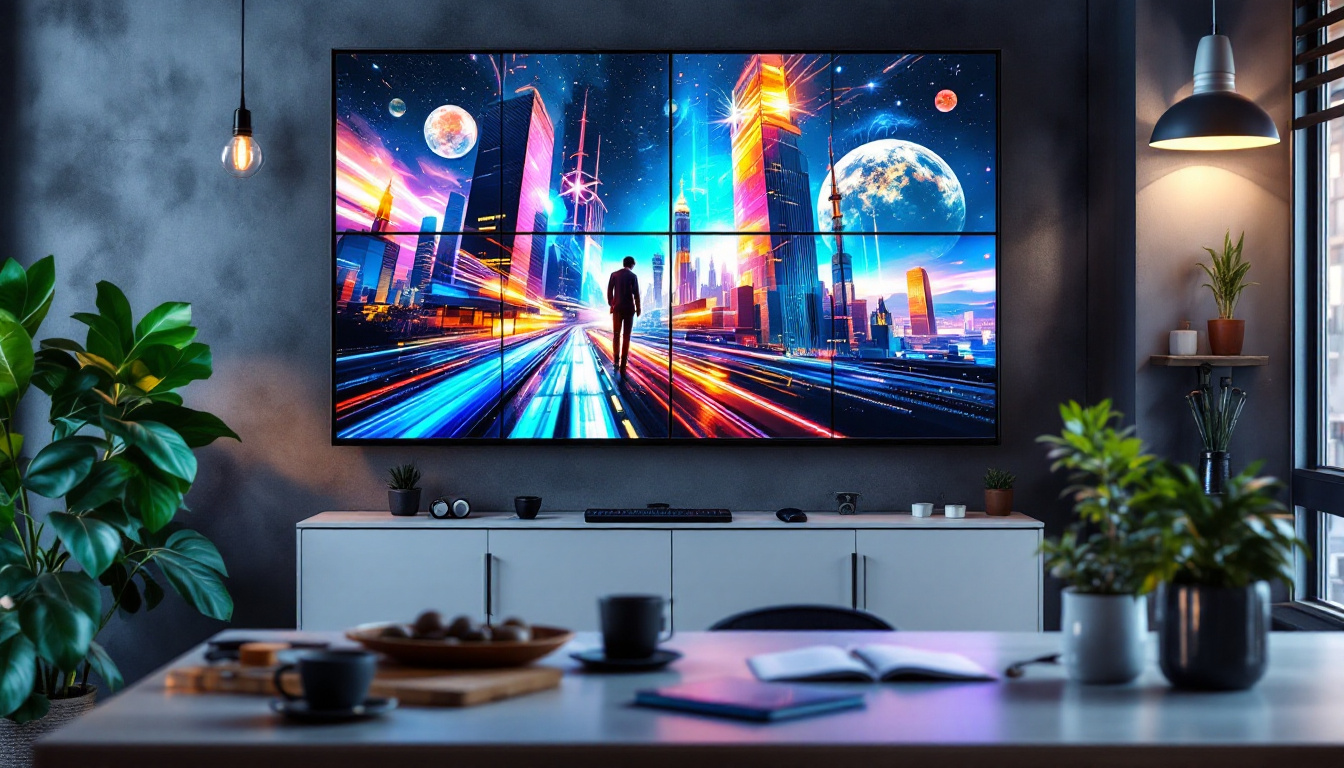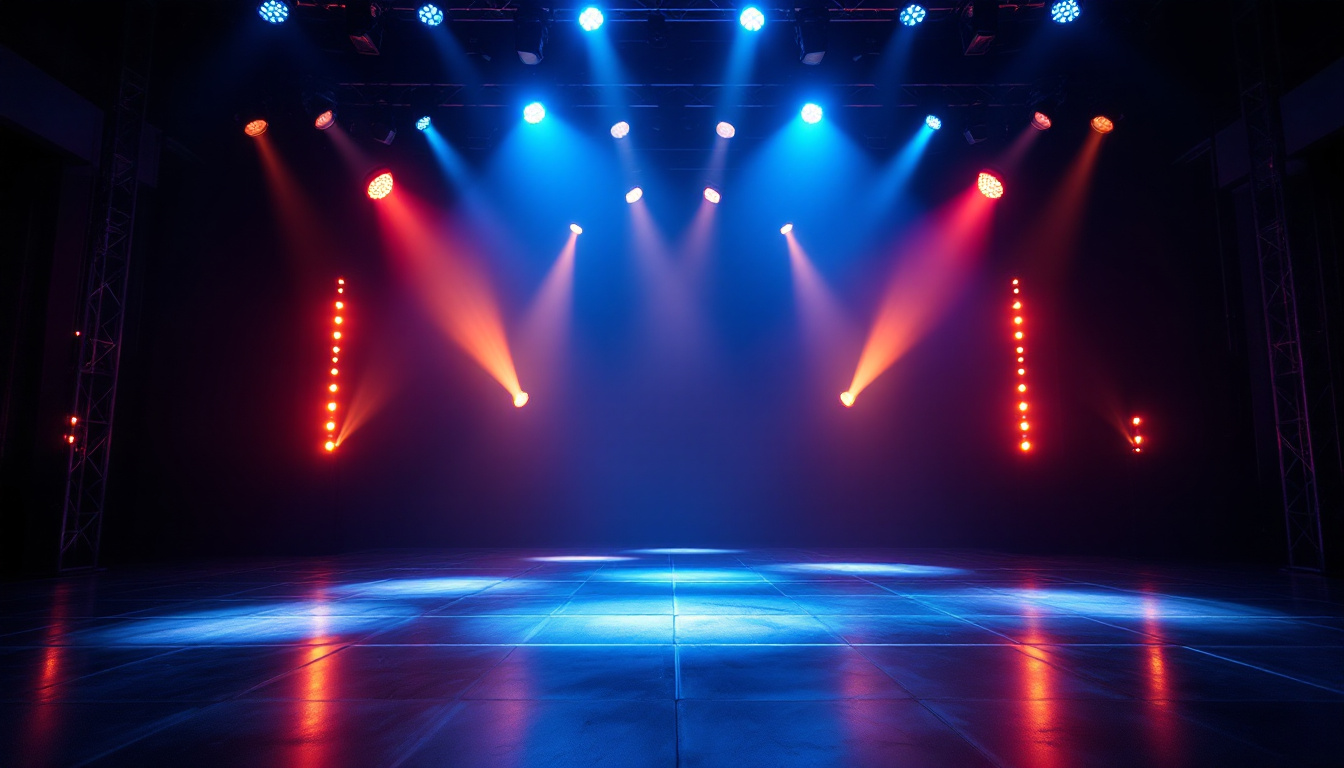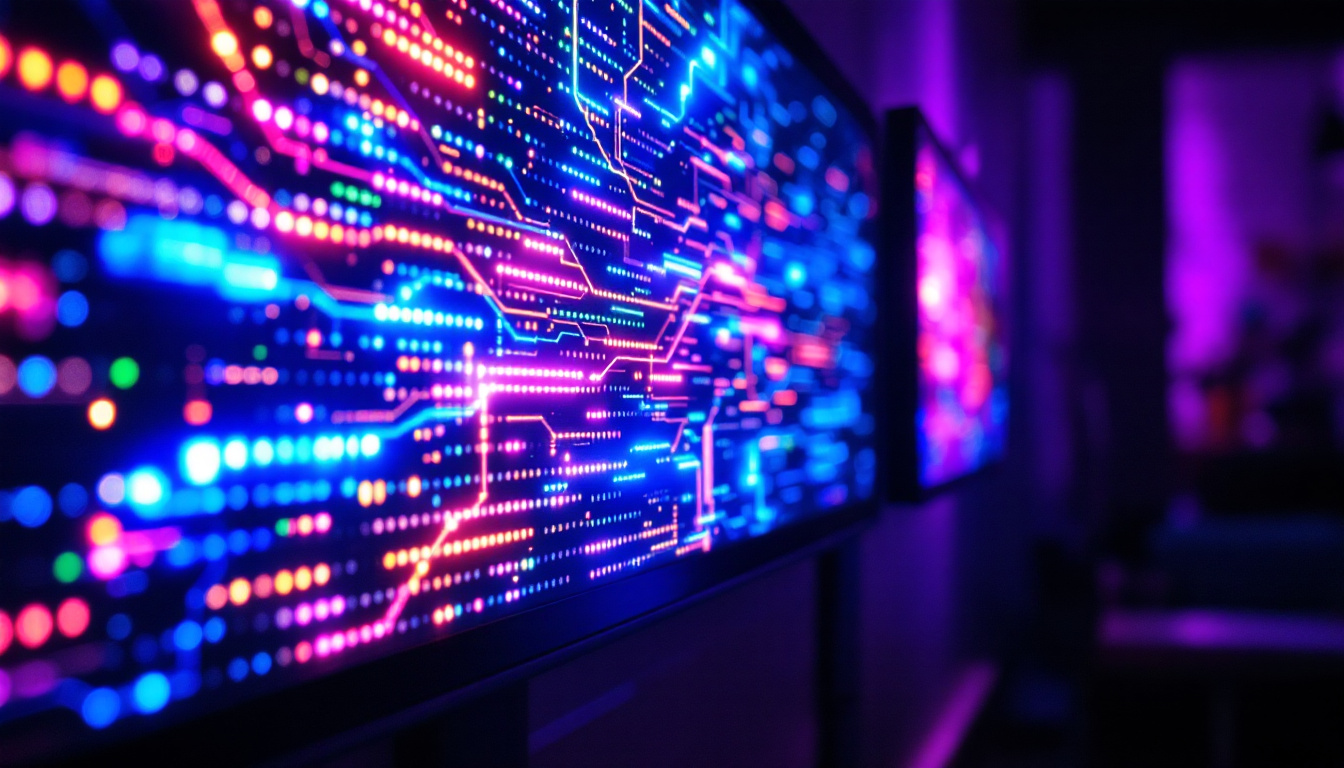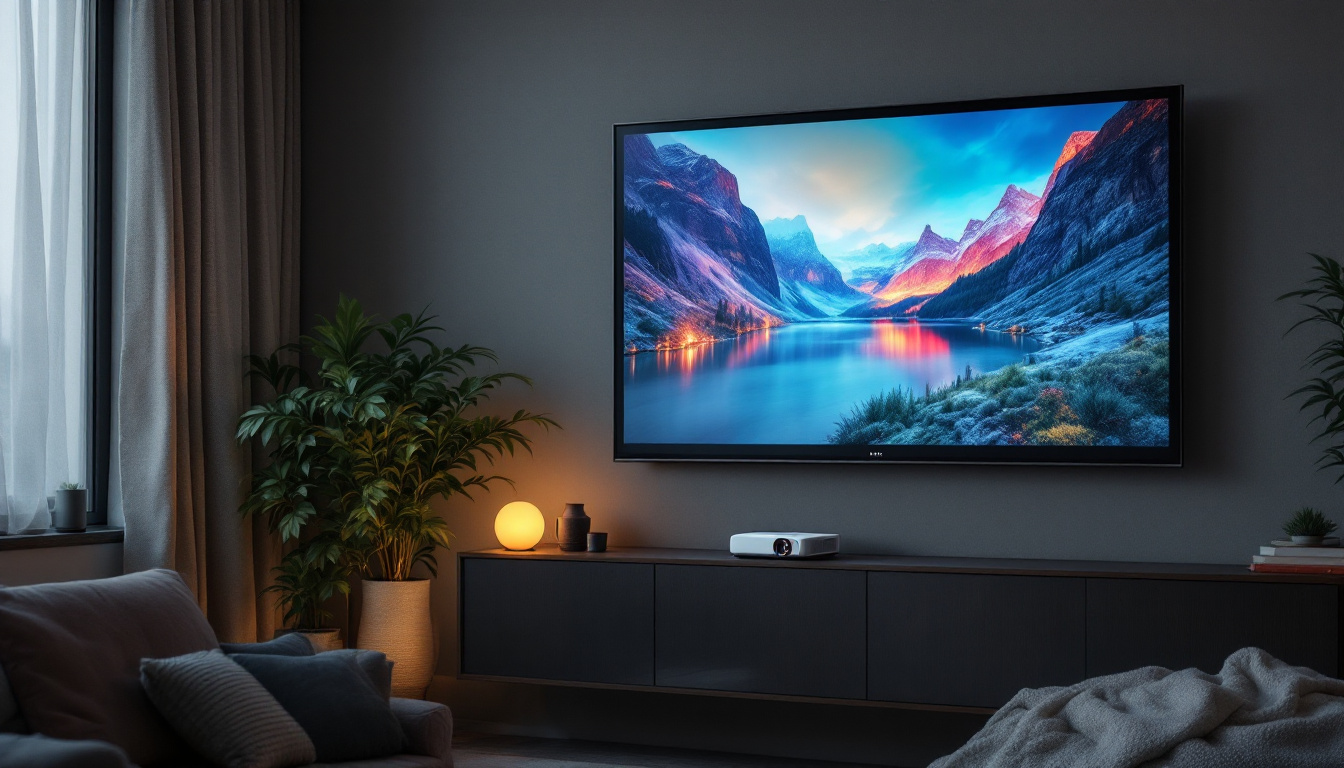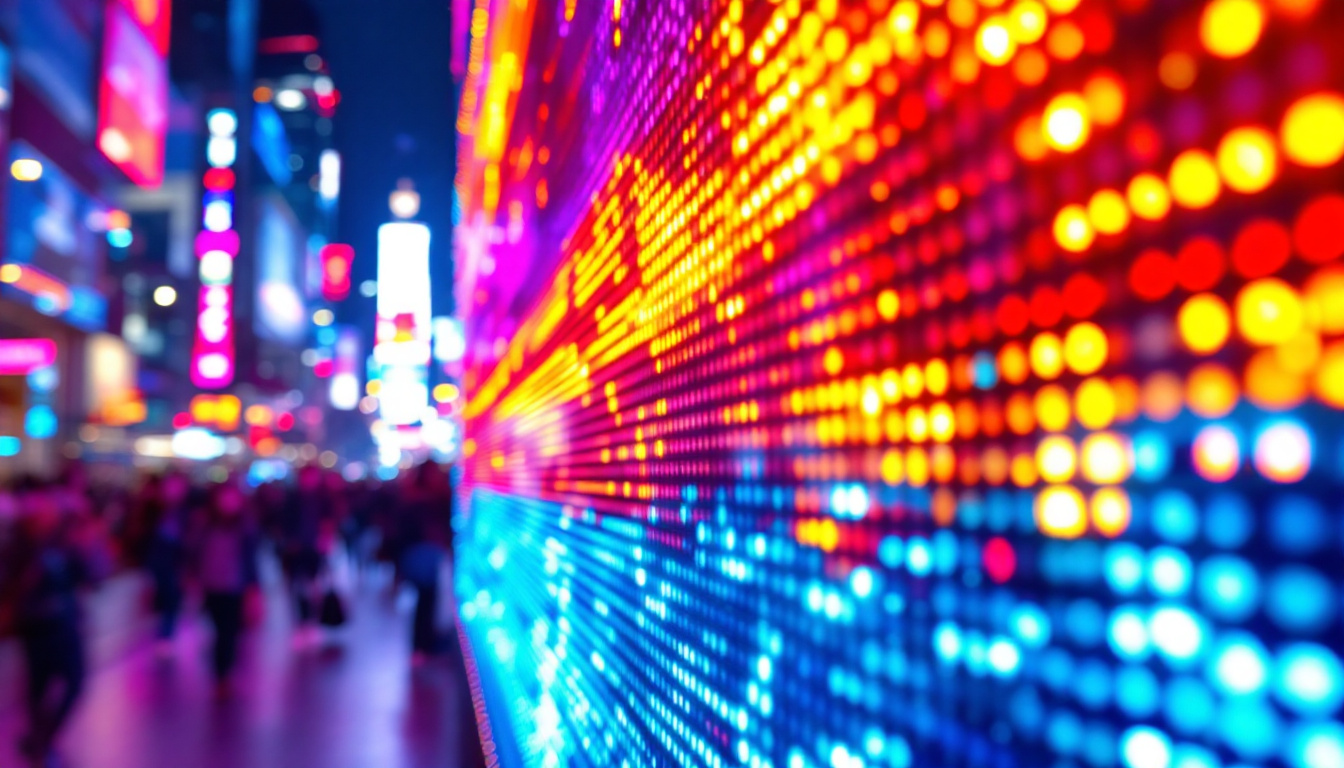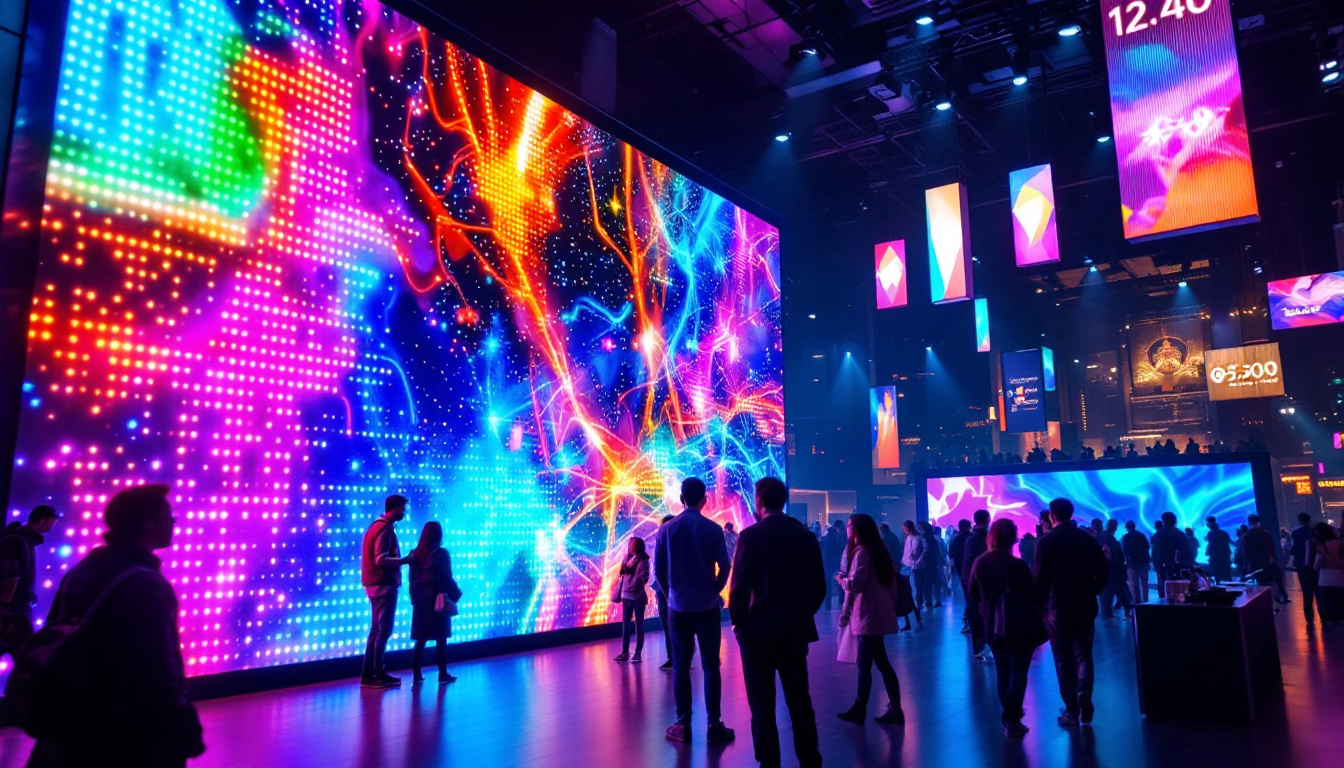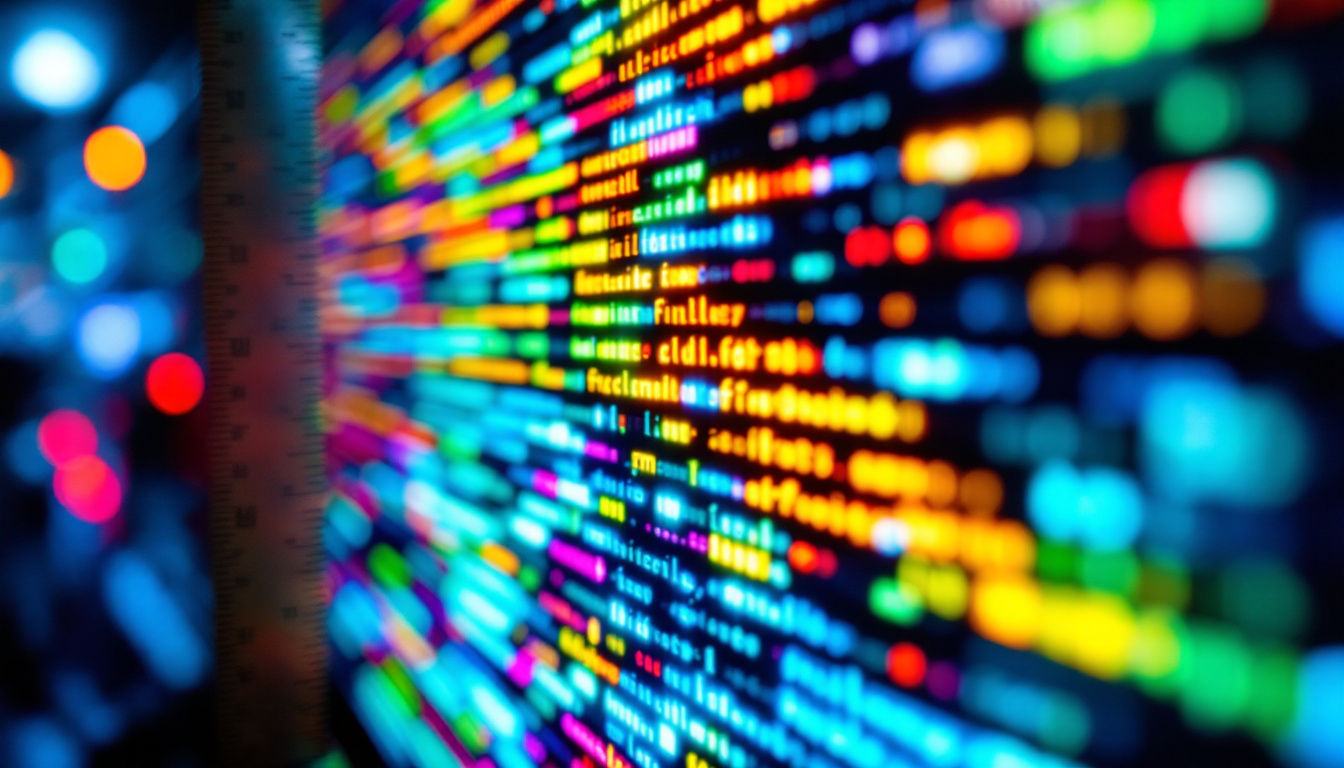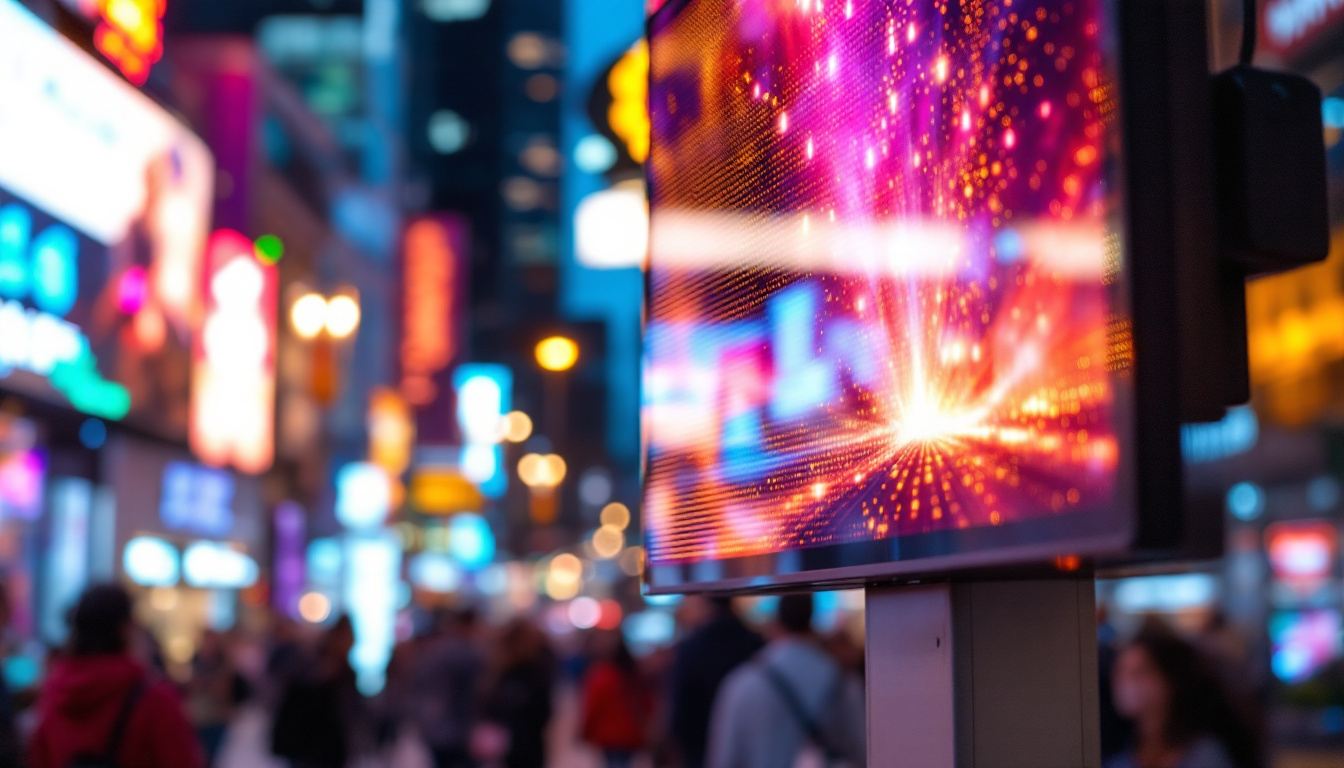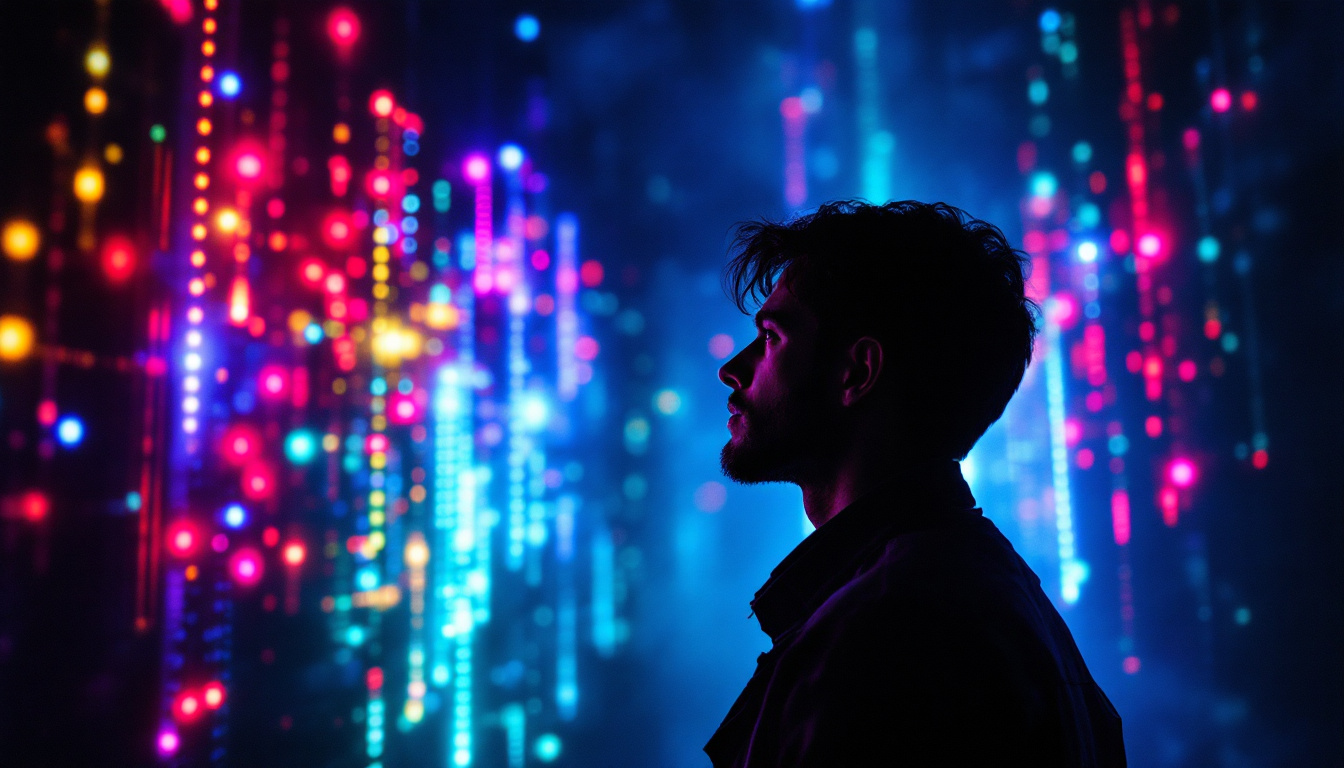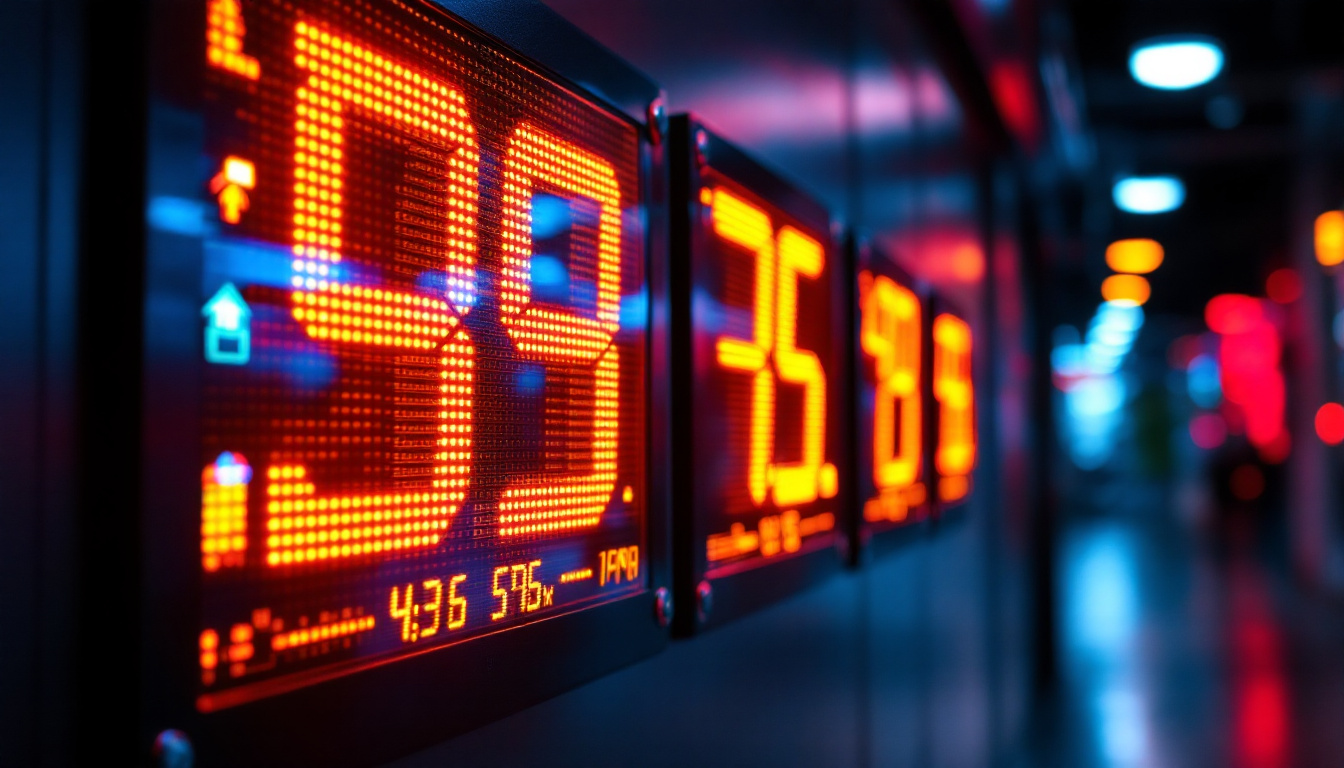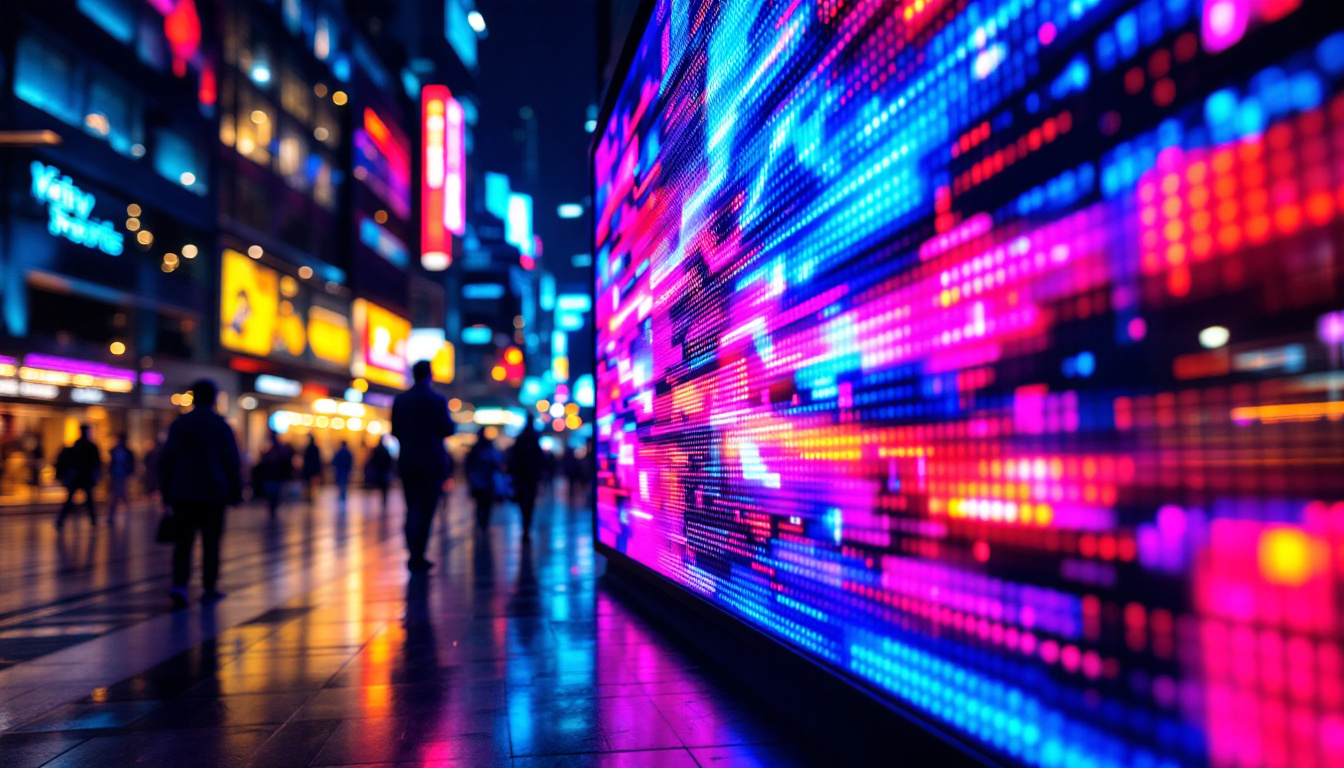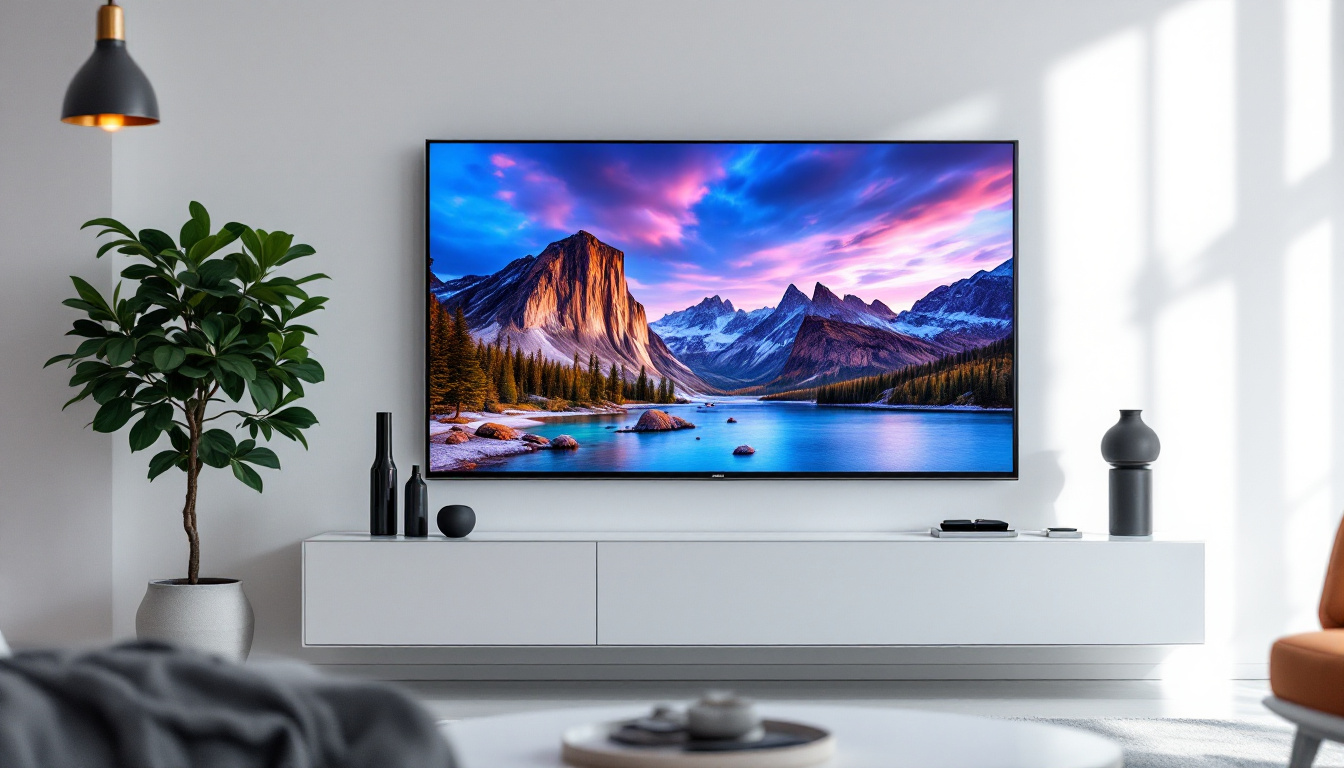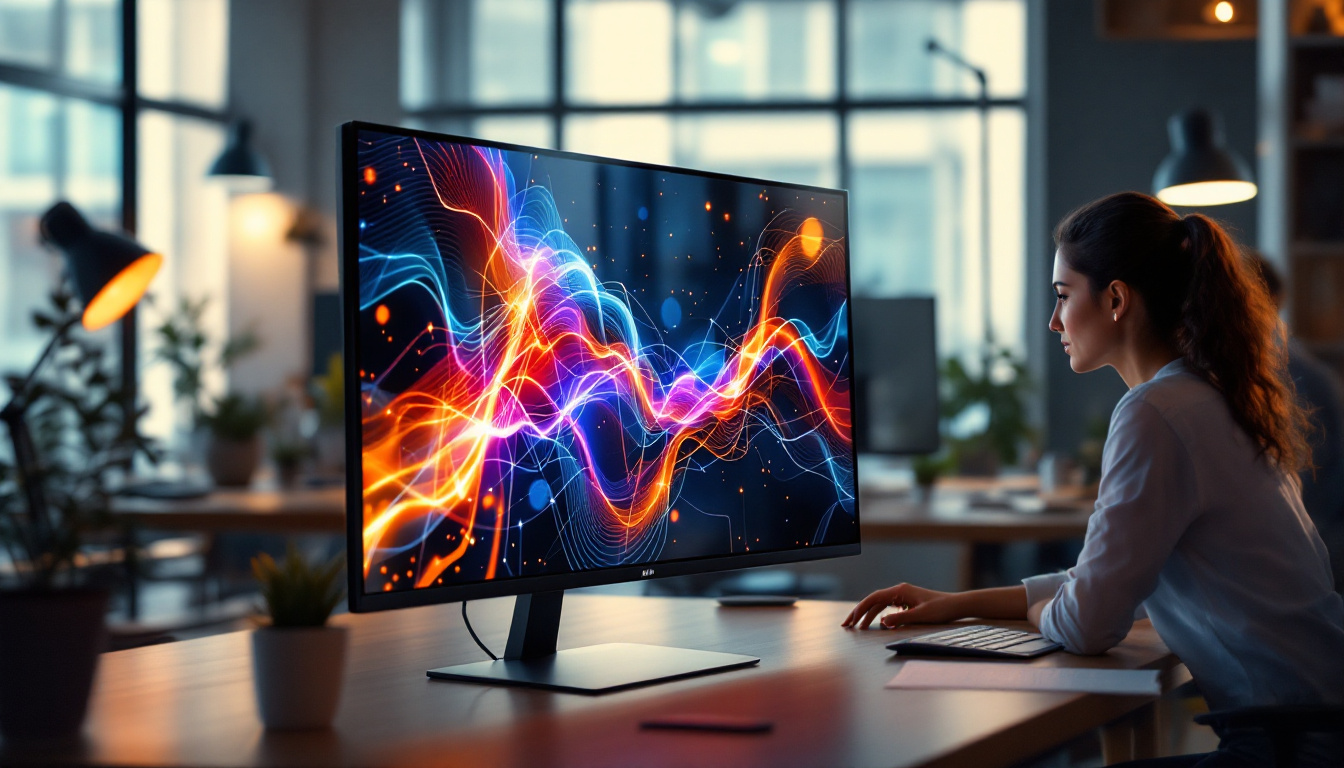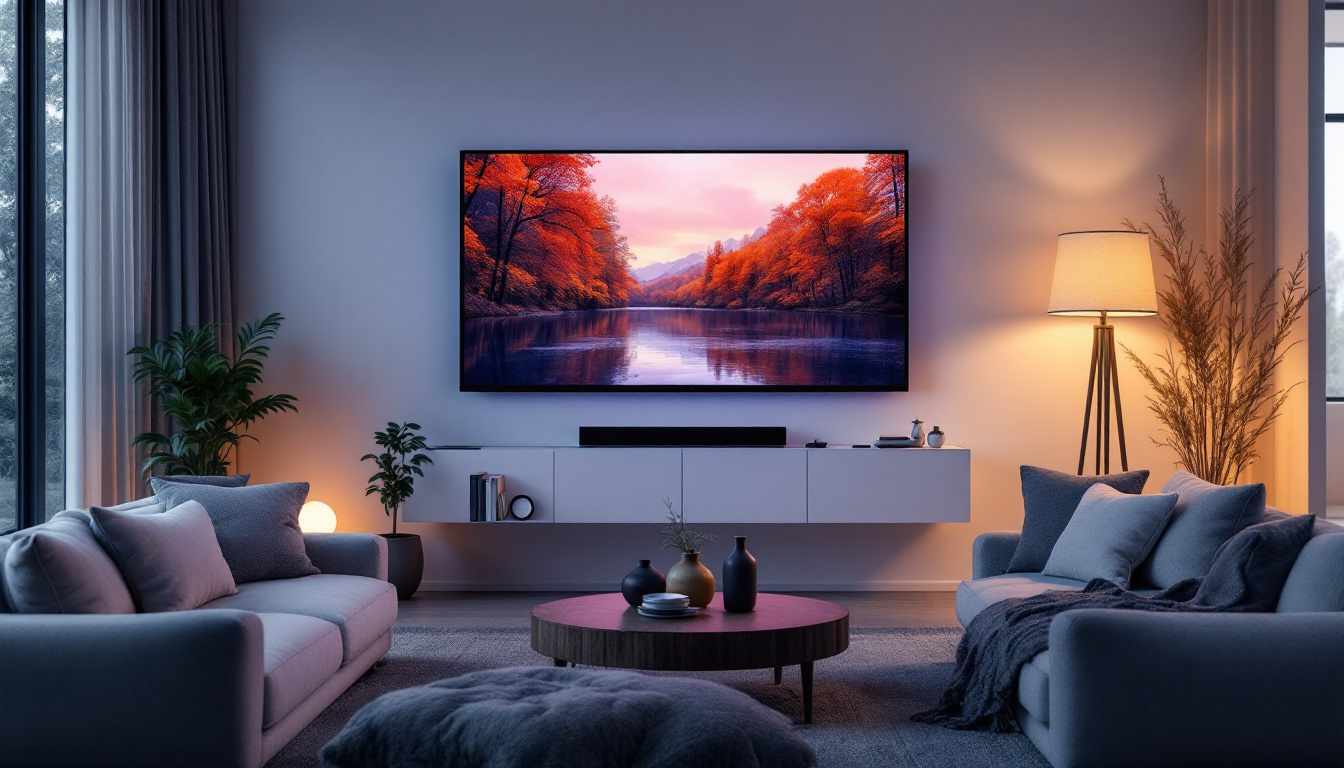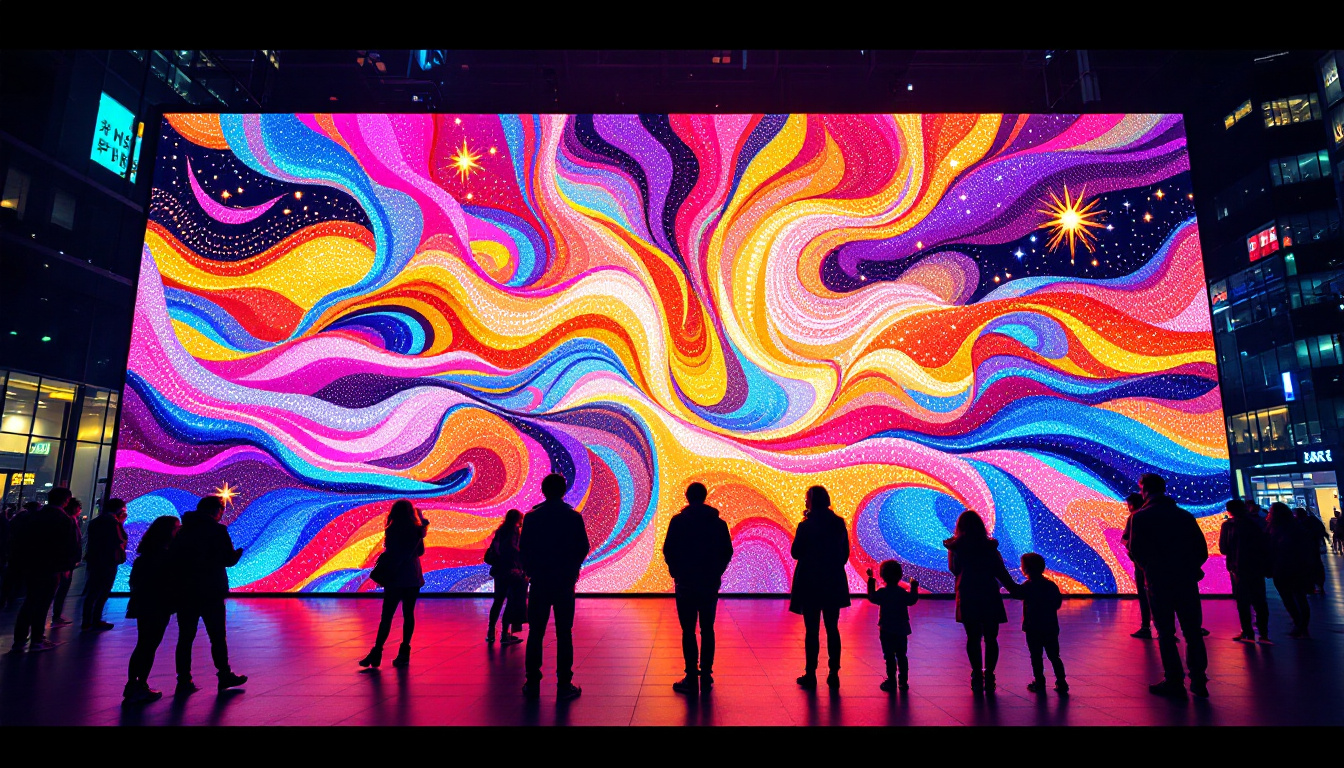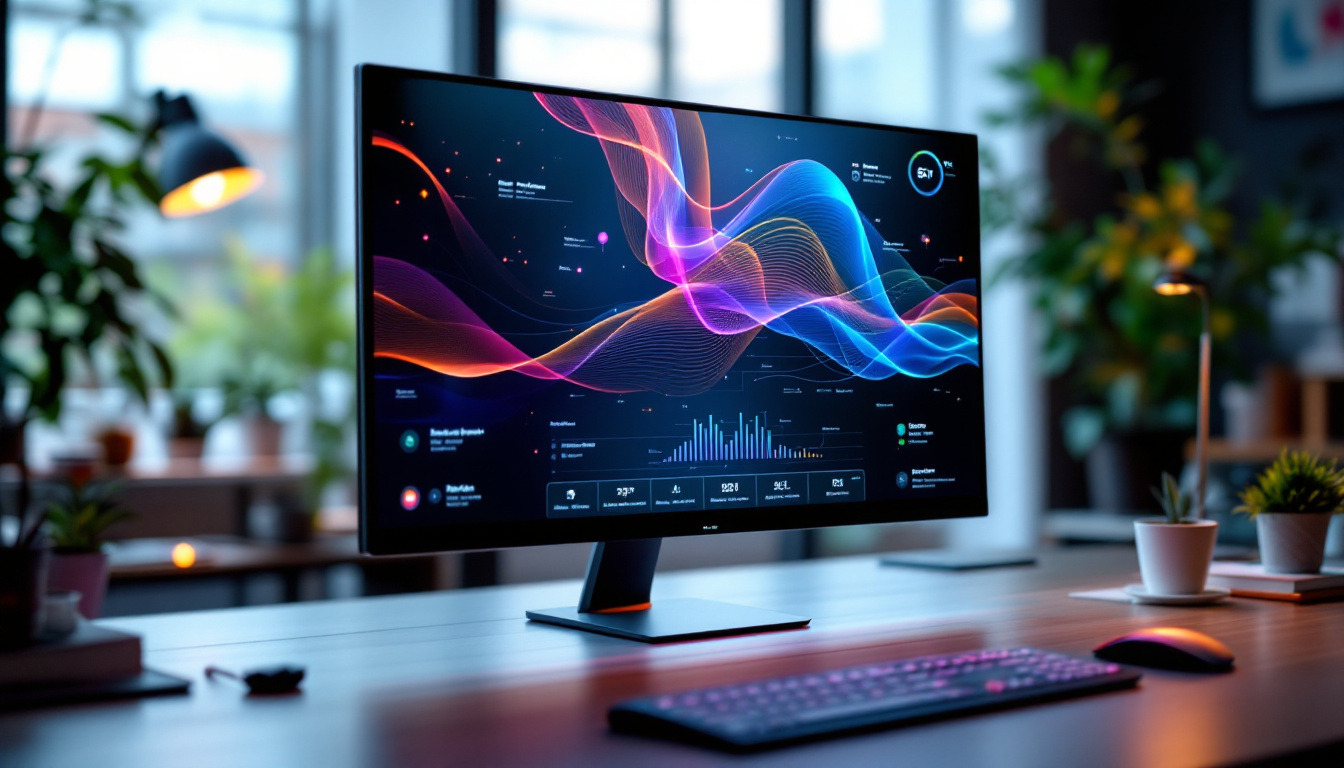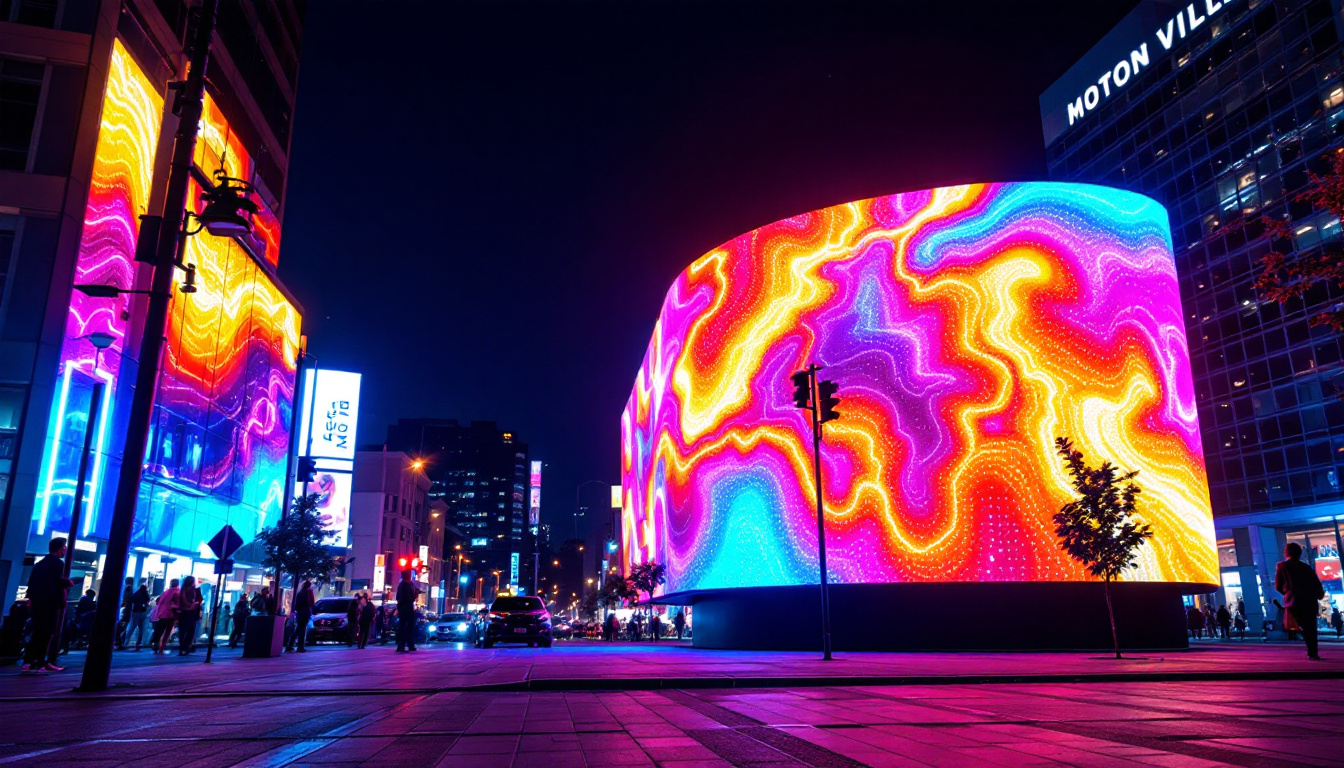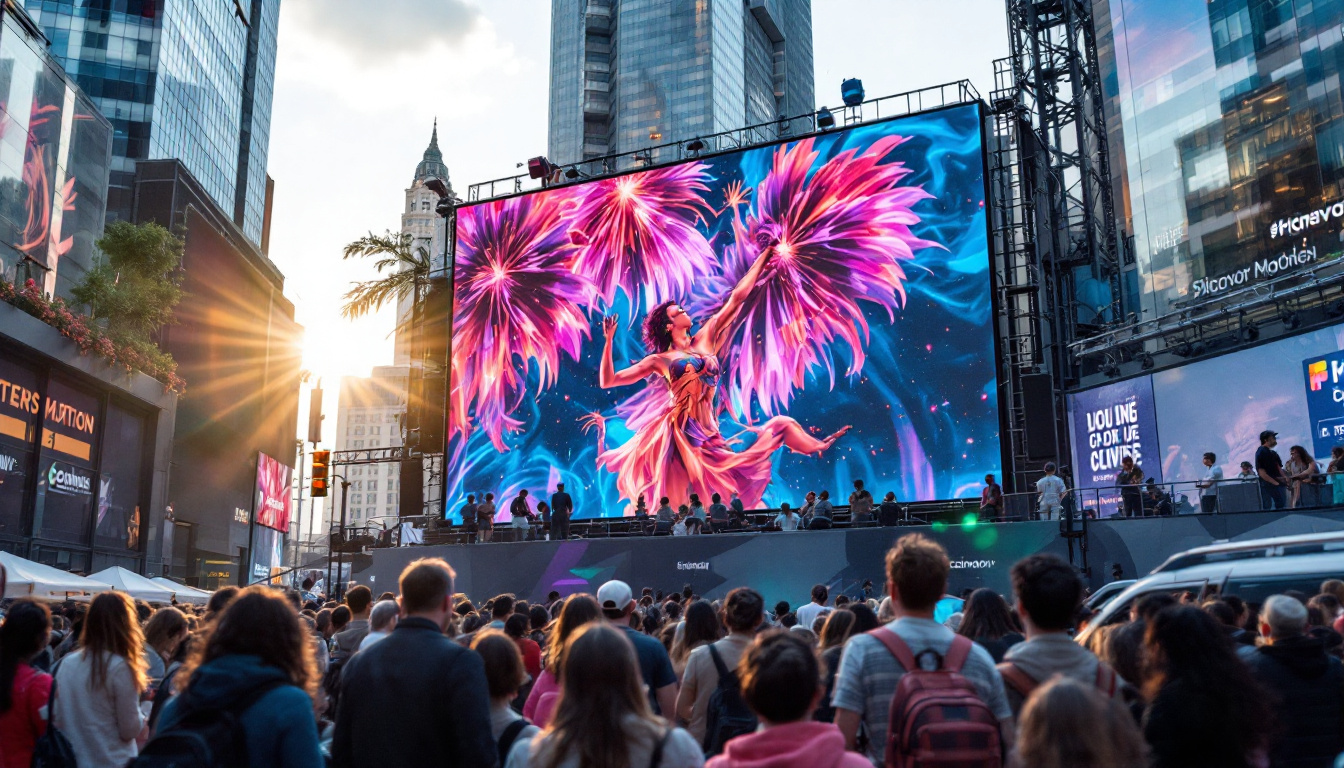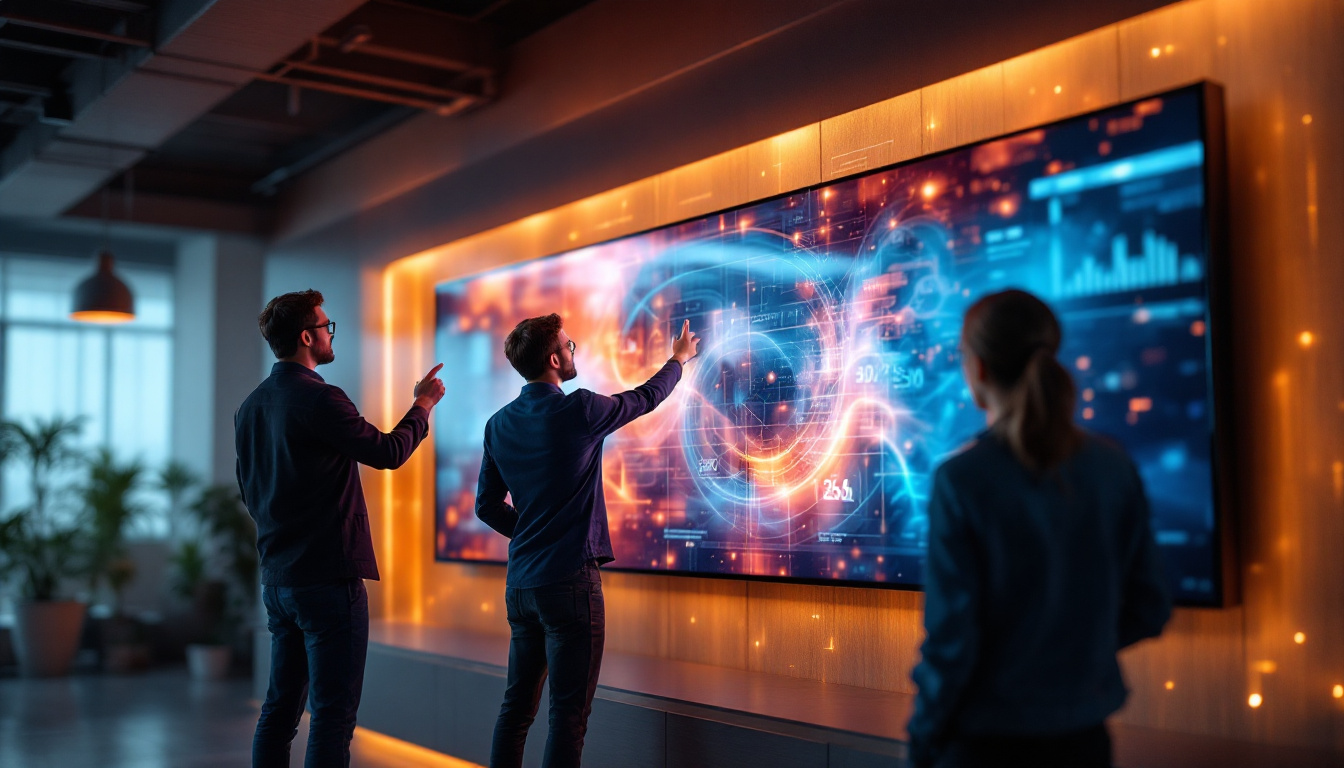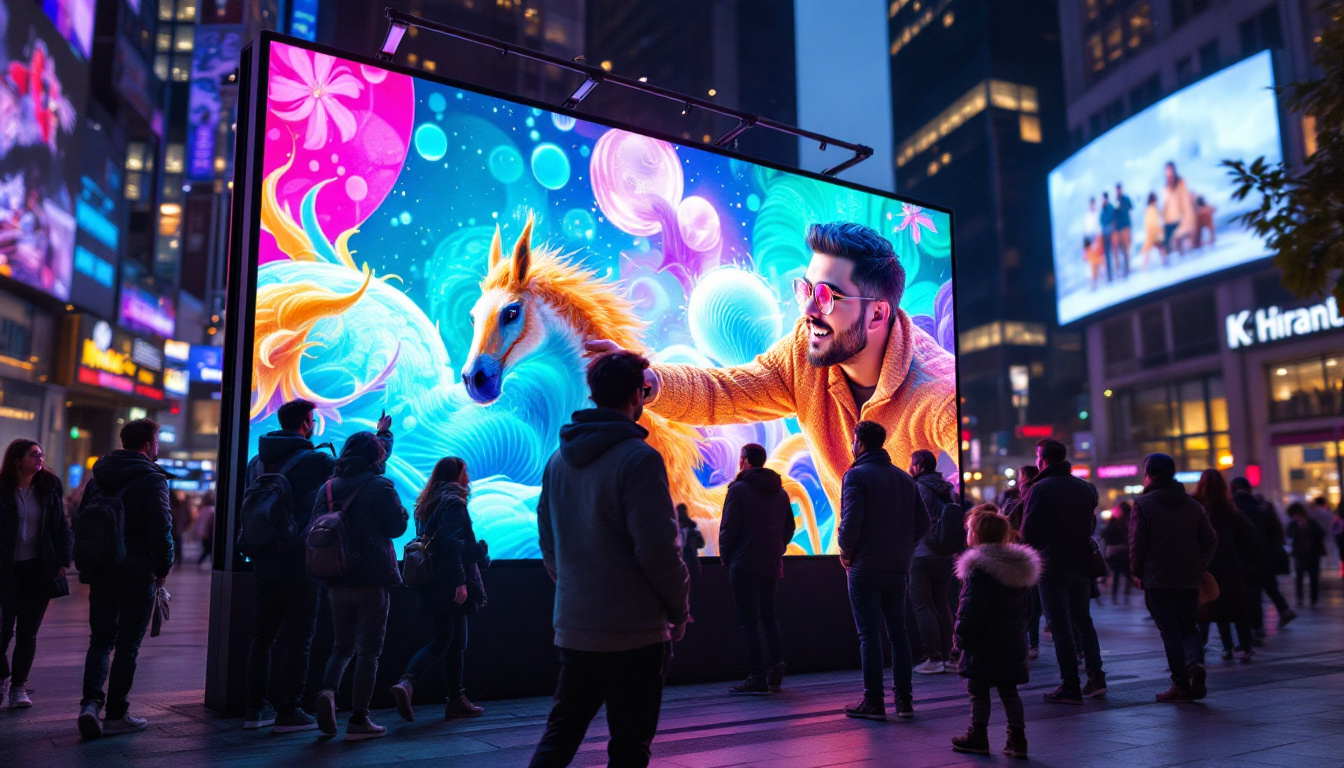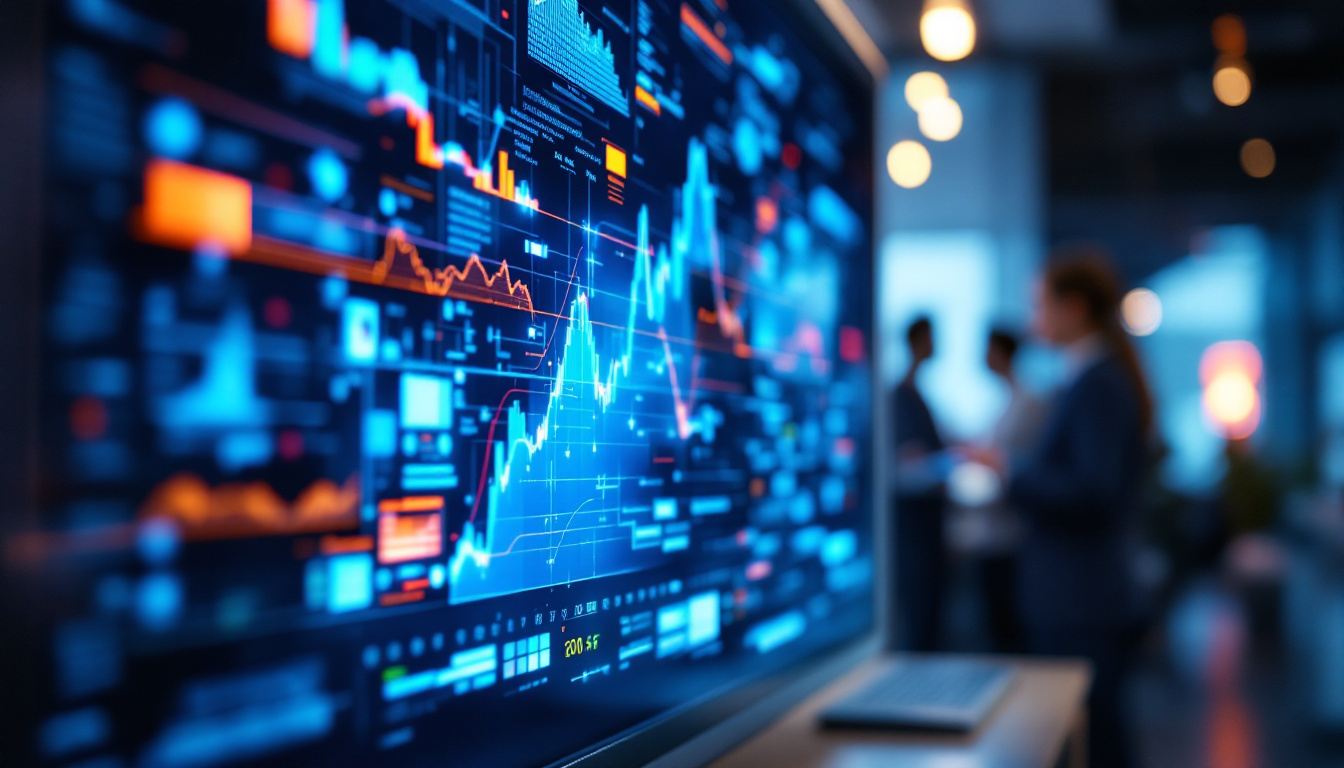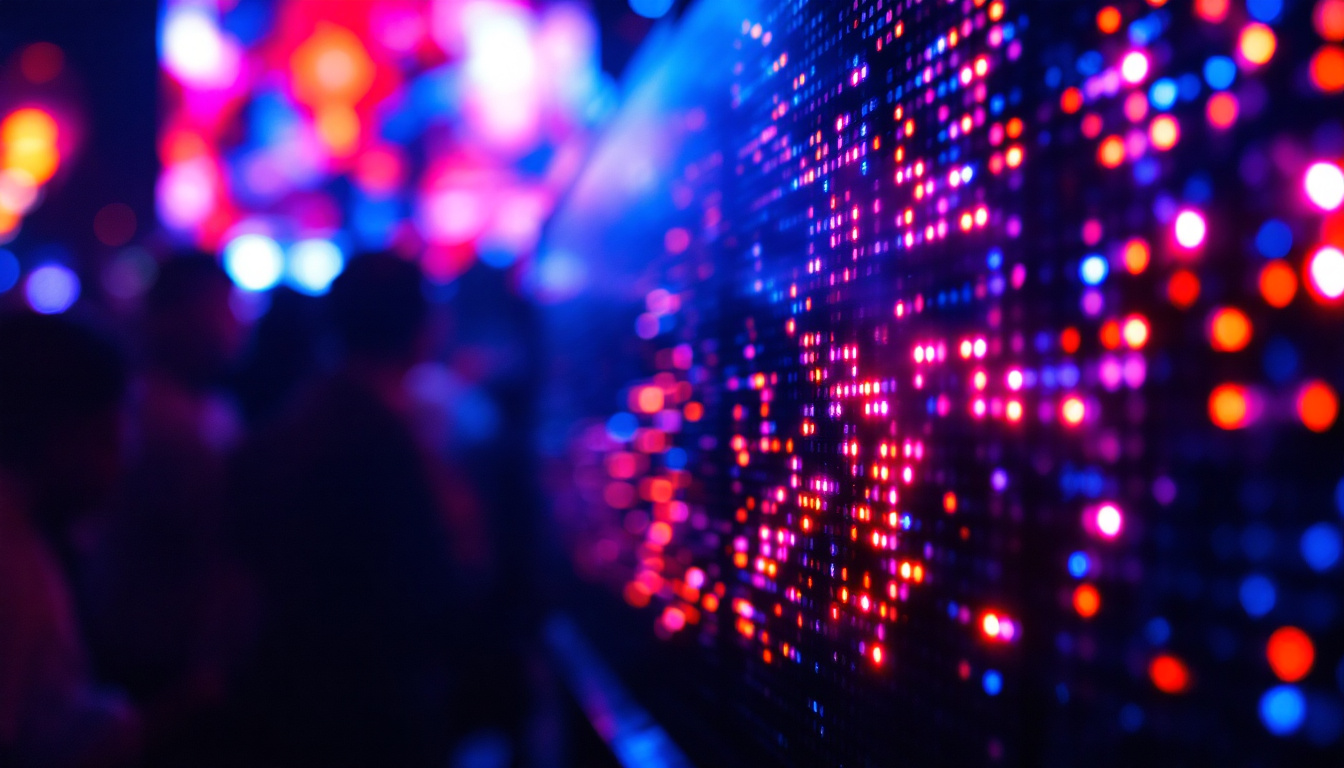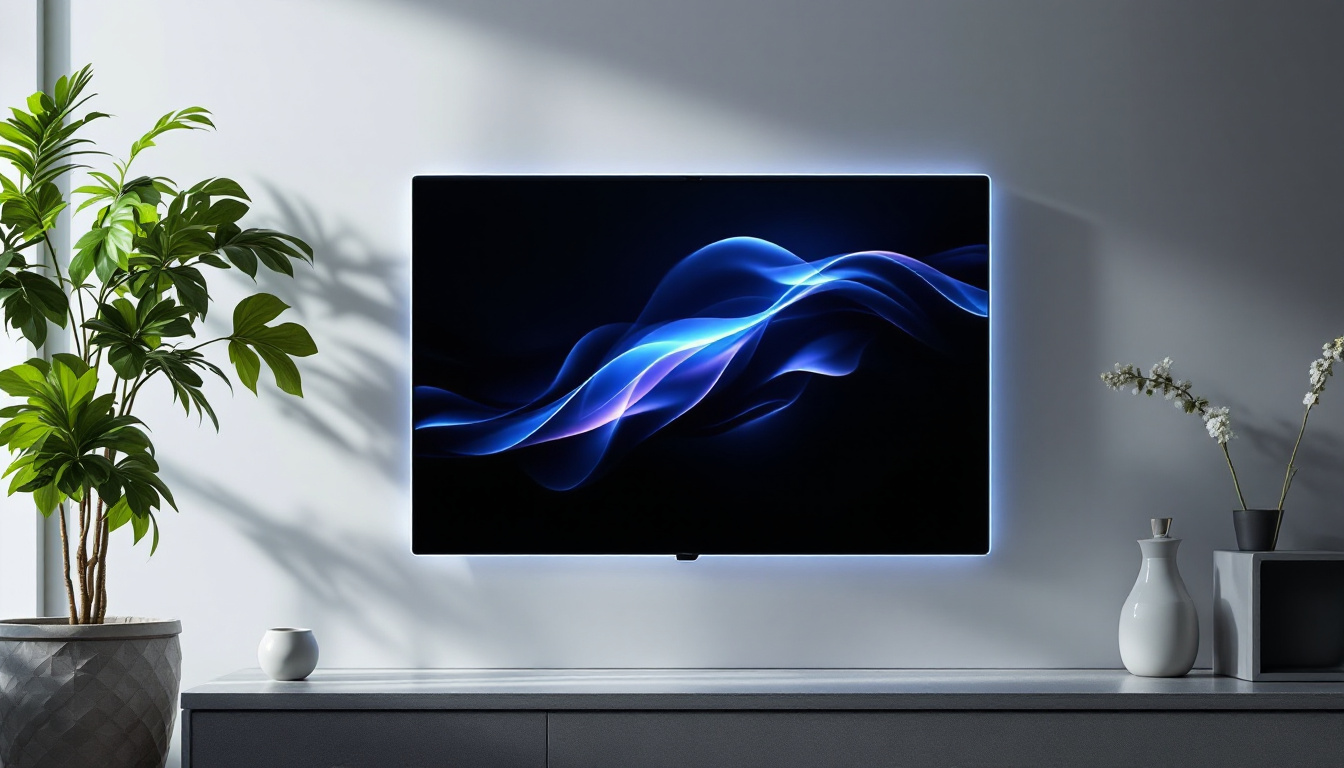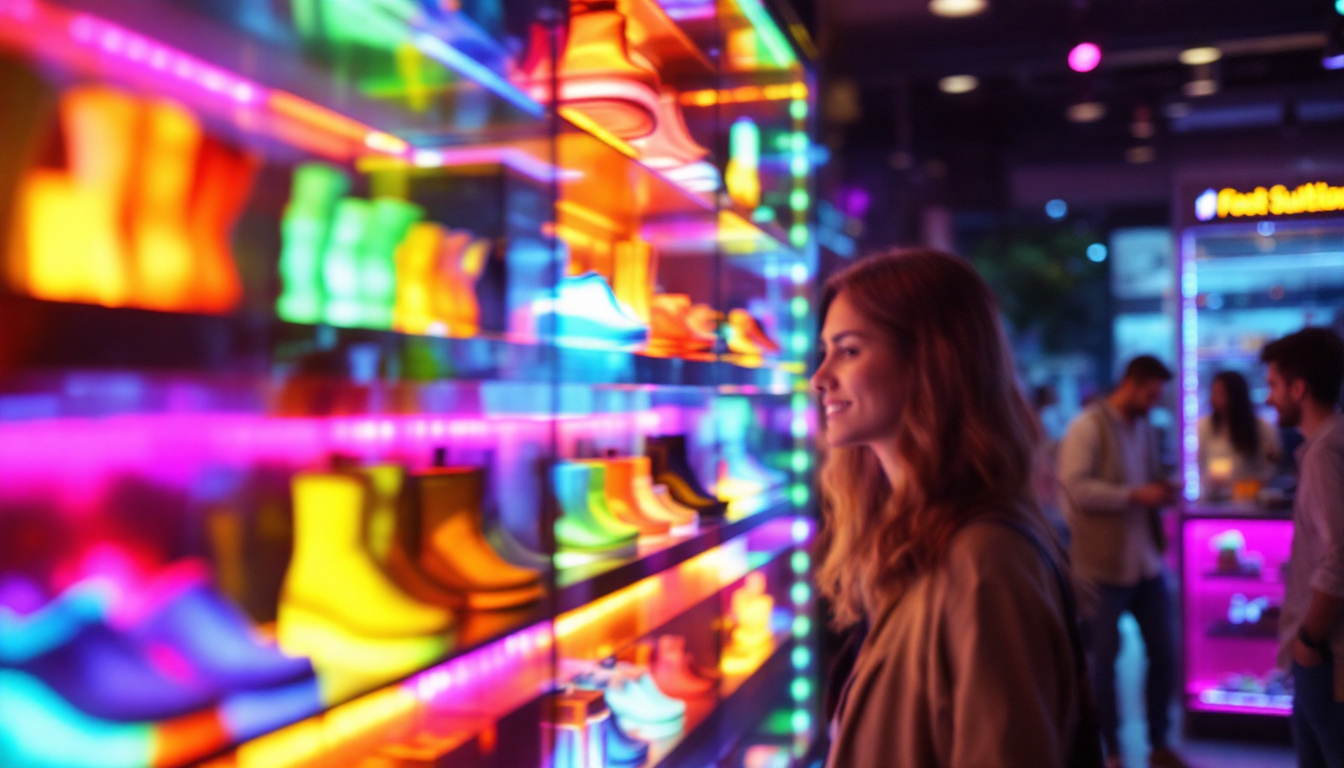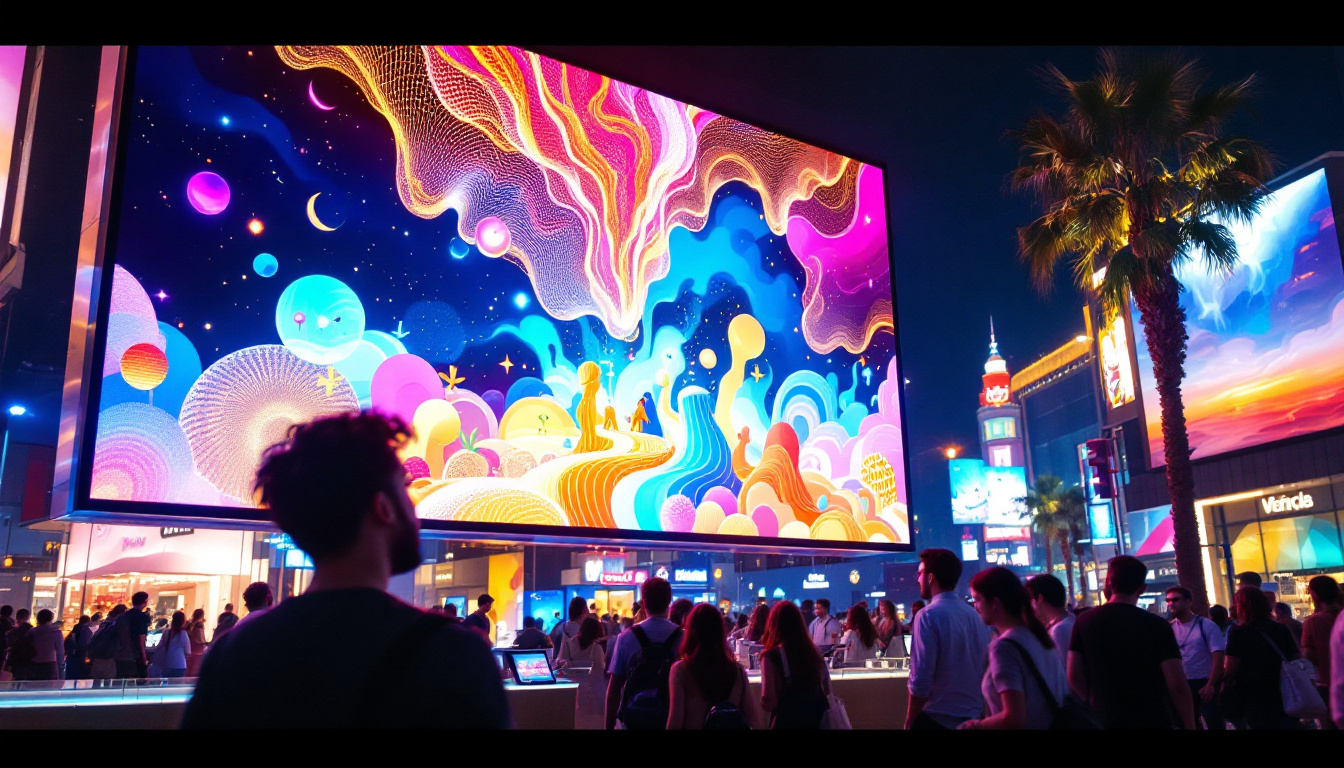In the age of digital communication, visual displays have become an essential part of our daily lives. From advertising billboards to conference room presentations, big display monitors, particularly LED displays, are at the forefront of this visual revolution. This article provides a comprehensive overview of LED displays, exploring their technology, advantages, applications, and future trends.
Understanding LED Display Technology
LED, which stands for Light Emitting Diode, is a technology that has transformed the way images and videos are displayed. Unlike traditional LCDs that rely on backlighting, LED displays use diodes that emit light when an electric current passes through them. This fundamental difference leads to several advantages in terms of brightness, color accuracy, and energy efficiency.
How LED Displays Work
At the core of LED technology is the semiconductor material that emits light. When electricity flows through the diode, it excites the atoms in the semiconductor, causing them to release energy in the form of photons. This process creates the vibrant colors and brightness that LED displays are known for.
LED displays can be categorized into two main types: direct view and backlit. Direct view LED displays consist of individual diodes that create the image directly, while backlit LED displays use a grid of LEDs to illuminate an LCD panel. Each type has its unique applications and benefits, making them suitable for various environments.
Types of LED Displays
LED displays come in several configurations, each designed for specific uses. The most common types include:
- Indoor LED Displays: These are typically used in environments such as shopping malls, theaters, and conference rooms. They offer high resolution and brightness, making them ideal for close viewing.
- Outdoor LED Displays: Built to withstand various weather conditions, outdoor LED displays are often used for billboards and public signage. They are designed to be visible in bright sunlight and are usually larger in size.
- Transparent LED Displays: A newer innovation, transparent LED displays allow for visibility through the screen while still providing vibrant images. These are often used in retail environments to showcase products while maintaining an open feel.
In addition to these common types, there are also specialized LED displays that cater to niche markets. For instance, curved LED displays are gaining traction in both commercial and residential settings, providing an immersive viewing experience that traditional flat screens cannot match. These displays can wrap around corners or fit into unique architectural designs, making them particularly popular in high-end retail spaces and modern home theaters.
Furthermore, flexible LED displays are another exciting development in this technology. These displays can be bent or shaped to fit unconventional surfaces, allowing for creative installations that were previously unimaginable. This versatility opens up new possibilities for advertising and art installations, enabling designers to push the boundaries of visual communication in public spaces. As LED technology continues to evolve, we can expect even more innovative applications that enhance our interaction with digital content.
Advantages of LED Displays
LED displays offer numerous benefits that make them a popular choice for both commercial and personal use. Understanding these advantages can help businesses and individuals make informed decisions about their display needs.
Superior Brightness and Color Accuracy
One of the standout features of LED displays is their exceptional brightness. This makes them suitable for environments with high ambient light, such as outdoor settings or brightly lit indoor spaces. The ability to produce vibrant colors and deep blacks enhances the overall viewing experience, making LED displays ideal for video content and dynamic presentations. Furthermore, advancements in LED technology have led to improved color gamuts, allowing for a wider range of colors to be displayed accurately. This is particularly beneficial for applications in graphic design and photography, where color precision is paramount.
Energy Efficiency
Compared to traditional display technologies, LED displays are significantly more energy-efficient. They consume less power while delivering superior performance, which translates to lower electricity bills and a reduced environmental footprint. This efficiency is particularly beneficial for businesses that operate large display networks, as it can lead to substantial cost savings over time. Additionally, many LED displays come equipped with smart technology that allows for automatic brightness adjustments based on ambient light conditions, further enhancing energy savings and extending the lifespan of the display.
Longevity and Durability
LED displays are known for their longevity, often lasting up to 100,000 hours or more. This durability means less frequent replacements, making them a cost-effective solution in the long run. Additionally, many LED displays are designed to withstand harsh conditions, making them suitable for outdoor use where they may be exposed to the elements. Their robust construction also makes them resistant to shock and vibration, which is particularly advantageous in high-traffic areas or during events. This resilience not only ensures consistent performance but also minimizes maintenance costs, allowing businesses to focus on their core operations without the distraction of frequent repairs or replacements.
Versatility in Applications
Another significant advantage of LED displays is their versatility. They can be used in a wide range of applications, from digital signage and advertising to event staging and art installations. Their modular design allows for creative configurations, enabling businesses to create custom shapes and sizes that fit their specific needs. This flexibility is particularly appealing in retail environments, where eye-catching displays can attract customers and enhance the shopping experience. Moreover, with the integration of interactive technology, LED displays can facilitate engaging experiences, allowing users to interact with content in real-time, further enhancing their effectiveness as a marketing tool.
Applications of LED Displays
The versatility of LED displays allows them to be utilized in a wide range of applications across various industries. From advertising to entertainment, the possibilities are nearly endless.
Advertising and Marketing
One of the most prominent uses of LED displays is in advertising. Billboards and digital signage equipped with LED technology can capture the attention of passersby with bright, dynamic content. Advertisers can easily change messages and promotions, allowing for real-time marketing strategies that engage consumers effectively.
Events and Entertainment
In the entertainment industry, LED displays are used for concerts, festivals, and sporting events. Large video walls provide immersive experiences for audiences, enhancing the overall enjoyment of live performances. The ability to display high-resolution video and graphics ensures that every detail is visible, regardless of the audience’s distance from the stage.
Corporate and Educational Settings
LED displays are increasingly being adopted in corporate environments for presentations, meetings, and training sessions. Their clarity and brightness make them suitable for sharing information with large groups. In educational institutions, LED displays can facilitate interactive learning experiences, engaging students with dynamic content.
Future Trends in LED Display Technology
As technology continues to evolve, so too does the landscape of LED displays. Several trends are emerging that promise to shape the future of this industry.
Advancements in Resolution and Pixel Density
With the demand for higher resolution displays, manufacturers are focusing on increasing pixel density. This means that more pixels are packed into the same screen size, resulting in sharper images and finer details. Technologies such as MicroLED and MiniLED are paving the way for displays that deliver stunning visuals, even at close viewing distances.
Integration with Smart Technologies
The integration of LED displays with smart technologies is another trend gaining traction. Displays equipped with IoT capabilities can collect data and adjust content based on viewer engagement or environmental conditions. This level of interactivity opens up new possibilities for personalized advertising and user experiences.
Environmental Considerations
As sustainability becomes a priority for many businesses, the LED display industry is also moving toward more environmentally friendly practices. Manufacturers are exploring ways to reduce waste, recycle materials, and create energy-efficient products. This shift not only benefits the planet but also appeals to environmentally conscious consumers and businesses.
Choosing the Right LED Display
When selecting an LED display, several factors should be considered to ensure it meets the specific needs of the intended application. Understanding these factors can lead to a more informed purchase decision.
Resolution and Size
The resolution of an LED display is crucial, particularly for applications where clarity is paramount. Higher resolutions are ideal for close viewing, while lower resolutions may suffice for larger, more distant displays. Additionally, the size of the display should be chosen based on the viewing distance and the space available.
Brightness Levels
Brightness is another key factor, especially for outdoor displays. The ability to maintain visibility in various lighting conditions is essential for effective communication. It is advisable to choose a display with adjustable brightness settings to optimize performance based on the environment.
Installation and Maintenance
Consideration should also be given to the installation process and ongoing maintenance requirements. Some displays may require specialized installation, while others can be set up more easily. Additionally, understanding the maintenance needs, including cleaning and servicing, can help ensure the display operates effectively over its lifespan.
Conclusion
Big display monitors, particularly LED displays, have revolutionized the way visuals are presented across various sectors. Their superior brightness, energy efficiency, and versatility make them an ideal choice for advertising, entertainment, corporate, and educational applications. As technology continues to advance, the future of LED displays looks promising, with innovations that will enhance user experiences and sustainability.
In a world where visual communication is paramount, investing in high-quality LED displays can provide significant benefits, making them a valuable asset for any business or organization. Understanding the technology and its applications is essential for making informed decisions that align with specific needs and objectives.
Discover LumenMatrix’s Innovative LED Solutions
Ready to elevate your visual communication with cutting-edge LED technology? Look no further than LumenMatrix, a pioneer in creating LED displays that bring your content to life. Whether you’re in need of an Indoor LED Wall Display for your corporate presentations, an Outdoor LED Wall Display for impactful advertising, or any of our specialized solutions like Vehicle LED Displays and LED Sports Displays, LumenMatrix has the expertise to enhance your brand’s visibility. Experience the future of digital signage with our Custom LED Displays, All-in-One LED Displays, and LED Transparent Displays. Check out LumenMatrix LED Display Solutions today and start crafting unforgettable visual experiences.

